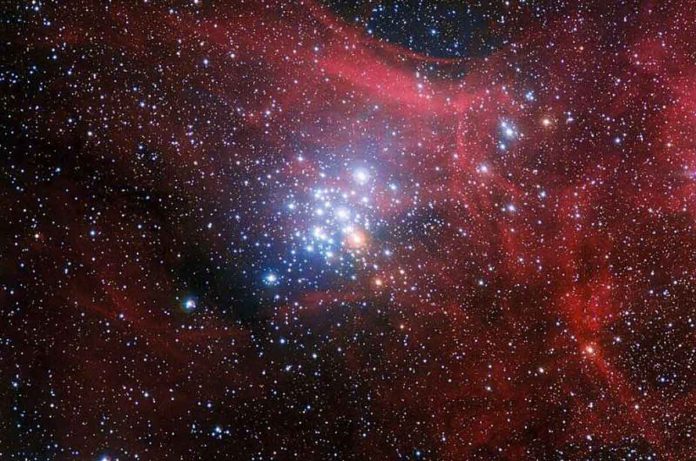An international team of astronomers used the Very Large Telescope (VLT) to conduct a spectroscopic study of the young open cluster NGC 3293. The findings of the study, which were published on the arXiv pre-print repository on July 26th, shed more light on the properties and chemical composition of this cluster.
Open clusters (OCs) are groups of stars that are gravitationally bound to each other and formed from the same giant molecular cloud. More than 1,000 of them have been discovered so far in the Milky Way, and scientists are still looking for more in the hope of discovering a variety of these stellar groupings. Extending the list of known galactic open clusters and studying them in depth could be critical for improving our understanding of our galaxy’s formation and evolution.
NGC 3293 (also known as the Gem Nebula) was discovered in 1751 and is a young (about 12 million years old) open cluster in the Carina Nebula, located 8,400 light years away from Earth. It is one of the Carina Nebula’s most populous stellar aggregates, containing tens of relatively unevolved early B stars as well as a few blue and red supergiants.
Despite numerous photometric observations of NGC 3293, only a few spectroscopic studies of this cluster have been carried out to date. As a result, a team of astronomers led by Thierry Morel of the University of Liège in Belgium performed a spectroscopic analysis of NGC 3293, focusing on the properties of its stellar B-type population in terms of spectral variability, chemical abundances, and rotational velocities.
“We present a homogeneous analysis of the Galactic open cluster NGC 3293 based on GES [Gaia-ESO public survey] and FS VLT-FLAMES observations of approximately 160 B-type member candidates with varying physical properties. It is, to the best of our knowledge, the most comprehensive spectroscopic study of this cluster to date “The researchers elaborated.
The study discovered that NGC 3293 has a Gaussian-like velocity distribution of stars, with peaks in the 200-250 km/s range. It was discovered that the majority of the stars in the cluster appear to rotate at 50 to 60 percent of their critical velocity. More massive cluster members, on the other hand, had significantly lower spin rates.
The age of NGC 3293 has been estimated to be around 20 million years, implying that the cluster is older than previously thought. As a result, NGC 3293 appears to be the Carina Nebula complex’s oldest stellar aggregate. The new value is based on a realistic distribution of spin rates and a detailed correction for the effect of stellar rotation on a star-to-star basis, whereas the old value was obtained from photometric studies that used non-rotating isochrones.
Despite the fact that the majority of the objects in NGC 3293 are fast rotators, the chemical analysis discovered that none of them expose core-processed material at their surface. This could be because the majority of the members of this cluster are most likely low-mass B dwarfs. The study also acknowledged the lack of strongly nitrogen-enriched stars in NGC 3293, pointing out that only the two brightest B-type members of this cluster show evidence of mild nitrogen enrichment.

